Department Head Greetings from New Head, Tim Bolton
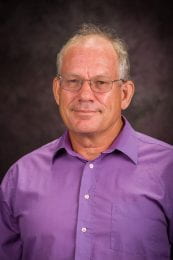 It has been far too long since we published our last issue of the K-State Physics Newsletter – 2019 to be exact. As the new head for the Department, I would like to welcome you to the first edition of our electronic newsletter. Our goal is to increase communication and to make it two-way. I encourage you to be in touch with us to let us know what you’re up to and also to let us know what you’d like to see more of in these newsletters.
It has been far too long since we published our last issue of the K-State Physics Newsletter – 2019 to be exact. As the new head for the Department, I would like to welcome you to the first edition of our electronic newsletter. Our goal is to increase communication and to make it two-way. I encourage you to be in touch with us to let us know what you’re up to and also to let us know what you’d like to see more of in these newsletters.
I became the new head of the Physics Department on June 26, 2022, and worked closely with former head Brett DePaola through the transition. Brett ably guided the department through many crises over the past five years. However, our Department still faces many challenges. COVID massively disrupted the learning of physics at all levels. Demographic trends and university reorganization have placed enormous stresses on our home College of Arts and Sciences that make it more difficult for us to achieve an optimal configuration of the Department.
Our stakeholders recognize the value of our teaching hundreds of students each semester in foundational pre-professional courses, but they are nervous about the small number of majors we graduate each year. We must do a better job telling the powerful story of the impact our graduates have on the state, nation, and world; and the enduring value to society of the basic and applied research that we do. Fortunately, we have the team in place here to meet these challenges, and we have YOU, our students, alumni, colleagues, and friends to support us. As mentioned above, we want to hear from you.
Whether you received a physics degree here, advanced in your career, took one of our introductory physics courses, or trained up the physicist inside of you at one of our public lectures, nothing will help us more than receiving your personal stories on how K-State Physics has impacted you and the world around you.
We encourage you to send us your stories. Call me at 785-532-6786. Send e-mail to me at alumni@phys.ksu.edu. If you are able, please continue to help us fund scholarships for our students and to support initiatives in excellence throughout our department.
If you have not yet done so, make sure to take a look at our newly renovated website www.phys.ksu.edu . Subscribe to our social media accounts which can be found on the website.
We hope you enjoy the update on K-State Physics in this issue and look forward to hearing from you.
End of an Era: Several Key Department Members Retire
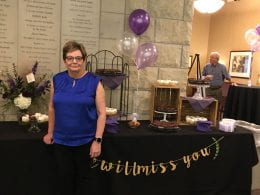
Peggy Matthews, longtime department administrator, retired in September 2019 after more than 45 years of service at Kansas State University, most of them in Physics as she joined the department in 1983. Matthews kept the department running smoothly and was beloved by students and faculty alike. She provided the help and support they needed and could always be counted on. The department hosted a reception in her honor at the K-State Alumni Center. Friends where K-State faculty, staff, and colleagues from across campus joined to celebrate her. Peggy is enjoying her retirement by traveling with her husband, Bill, and enjoying time with her children and grandchild.

Carol Sisson Regehr held several positions in the department after receiving her Physics MS in 1985 under the advisement of Larry Weaver. Carol was an Assistant Scientist for the James R. Macdonald Laboratory supervising purchasing, budgeting, and reporting for a DOE grant for the accelerators. She also became the go-to substitute to teach courses for professors working in the Macdonald Laboratory, when they were away at conferences. Thus, it was a natural fit for Carol to serve as an Instructor beginning in 2016 teaching studio sections for Engineering Physics. Carol is enjoying retirement traveling with her husband, Lowell.

Professor Emeritus Bruce Law came to K-State in 1994 as an assistant professor in physics. He was promoted to full professor in 2000. Dr. Law’s research focused on liquid surface physics, which play a key role in many processes involving complex fluids. He also studied the application of light scattering, visible light reflectometry and interferometry, neutron and x-ray reflectometry, and AFM of bulk and surface phenomena, and theoretical studies of hydrodynamic interactions in bulk and surface phases. Law was named a Fellow of the American Physical Society in 2011. Bruce is enjoying traveling, playing chess, and biking adventures.
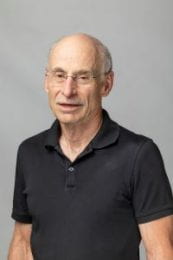
University Distinguished Professor Emeritus and University Distinguished Teaching Scholar Emeritus Christopher M. Sorensen in the Departments of Physics and Chemistry (adjunct), Sorensen retired from K-State Physics in spring 2022 where he has spent his entire professional career. He is the author of more than 300 papers and holds several patents. He has mentored 41 students throughout his career. He is the primary inventor of the graphene production process licensed to the startup company HydroGraph Clean Power, Inc. which is featured elsewhere in this newsletter. In 2003 he won the David Sinclair Award of the American Association for Aerosol Research for his work on aerosol fractal aggregates and light scattering. He received the Olin Petefish Award in Basic Science from the Higuchi-KU Endowment fund and the Outstanding Publication Award from Aerosol Science and Technology. Not only known for his research, Sorensen was named the Carnegie Foundation and Council for the Advancement and Support of Education United States Professor of the year for doctoral and research universities. Although he has retired, Chris has not yet slowed down. He remains active in his research ventures and continues to teach Descriptive Astronomy on a volunteer basis.
We offer our sincere congratulations to these retirees as well as our gratitude for their dedication to generations of K-State Physics college students.
Teaching Faculty Member Joins Department
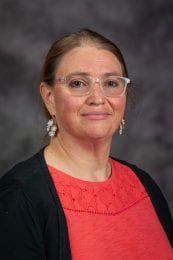
The Department welcomed a new faculty member this academic year. Barbara Fennell joined us in Fall 2022 as our first teaching faculty.
Fennell joined us as Teaching Associate Professor. She comes to us with more than 20 years of physics teaching experience having spent the last 10 years at College of the Ozarks.
Tim Bolton, head, says “As a new faculty member, Barbara has brought new ideas, new energy, and new knowledge that help make our department stronger. Barbara has brought this energy to Engineering Physics this past fall and will bring a lot to Descriptive Physics this spring as she works with Bret Flanders to prepare to take the helm of this pre-professional course from him while he is on sabbatical next year.”
Barbara earned her B.S. and M.Tech. degrees from Southeastern Oklahoma State University and an Ed.D. from Ball State University.
In addition to enjoying her transition to K-State and Manhattan, Barbara has appreciated the welcoming atmosphere in the Physics department – especially from its students. She has found the active learning approach of the Studio models used in our department to be a great collaborative experience.
Department Welcomes Several New Key Office Staff
There was a lot of change and excitement in 2022. In addition to a new head, the department has undergone several changes in office staff since 2019. We are pleased to be fully staffed with some wonderful people in key positions.
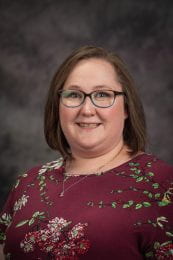
Kayla Engel joined our department in July at the front desk as office specialist. She is responsible for key control, mail, exam preparation and copying, and room scheduling. Kayla moved to the area with her husband, Darrin, who is the senior computer specialist for the Math department. They are parents to three year old daughter, Rosie.
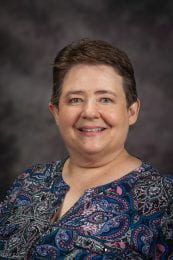
Alicia Cribbs is the Human Capital Services Representative for Physics/Math shared services. She came to Manhattan at the end of July just in time to appoint all of the new Graduate Teaching Assistants, lab instructors, and graders for the semester. Alicia comes to us from that other Kansas school down I-70 who made it to a football bowl game this year.

The final addition to complete the team is Krysta Wise, accounting specialist for Physics/Math shared services. Krysta moved to Manhattan in September and is responsible for supplies and bill payment as well processing travel requests and reimbursements with her counterpart, Cindy Carlyon
The department is grateful for the efforts of Kathy Roeser who recently left the College of Arts and Sciences as well as Cindy Carlyon, Kim Coy, and Kim Elliott who made sure that things ran smoothly during the time these positions were vacant.
Engaged Undergraduate Student Aims to Shape the Present and Future of Science
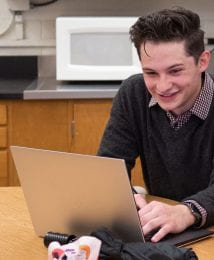
As an honors physics and international studies dual major with minors in classical studies and environment geophysics, Jeremy Kamman brings student involvement to a new level.
A Physics scholarship recipient, Kamman who hails from Antioch, Illinois, is active in the department and is also involved in Student Governing Association, serving as a senator for the College of Arts & Science.
Jeremy currently serves as president of the Physics Club and has been integral in bringing this group back to life post-COVID. It’s wonderful to see the Giese Student Center filled with undergraduates again.
Jeremy is active in department teaching and research. He has served as a teaching assistant in General Physics laboratories and is involved in the research program of Loren Greenman, who was his faculty mentor during the department’s 2022 Research Experiences for Undergraduates program. Jeremy continues his work in Greenman’s group on a theoretical computational ultrafast dynamics for molecules project.
Jeremy aspires to a career in science policy and national security. Based on his accomplishments at K-State, we are certain that this impressive young man is poised to meet every goal he strives to attain. With a young scientist like Jeremy, we all can be optimistic about the future his generation will help build.
Undergraduate Alumni Spotlight – Zoe Cosgrove
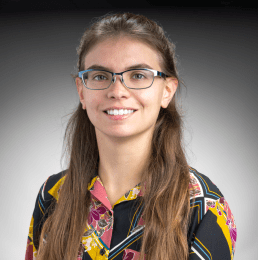
Zoe Cosgrove graduated with Bachelor of Science degrees from K-State in Physics and Electrical Engineering in 2020. After graduation, she began working at Johns Hopkins University Applied Physics Laboratory (APL) in Laurel, Maryland, far from her hometown of Derby, Kansas. APL is a University-affiliated research center performing classified and unclassified work for government sponsors. Lab mission areas include missile defense, sea control, civil space, cyber operations, national health, homeland protection, and more.
Cosgrove’s job as a research engineer is to develop solutions for improving wireless communications for their sponsors, usually in a tactical environment. Project examples include 5G cellular, High Frequency communications, Radio Frequency Identification (RFID) protocols, and internet of things (IoT) devices. These prototypes are generally tested in the field and eventually deployed as operational prototypes affording Zoe the opportunity to travel to military bases across the country to meet lab sponsors and field test equipment.
Zoe has recently become involved in the lab’s initiative building expertise in quantum technologies. Her team is researching the feasibility of a quantum communications system. While there are many exciting papers published about researchers that have established quantum links and transmitted entangled pairs or quantum states, a host of challenges remain in order to make a functional “quantum internet.”
Cosgrove credits her experience performing the SQUID experiment in the department’s Advanced Lab with aiding her in her work. She said, “Because some qubits and superconducting qubits are made using Josephson junctions which I learned about while working on the SQUID experiment, I already had an idea of how these Josephson junctions work. The opportunity to research applied quantum technologies excited me because it gave me a chance to use what I had learned in my quantum mechanics classes.” Zoe is glad to have physics and engineering backgrounds developed at K-State as they aid her greatly in her current work at Johns Hopkins Advanced Physics Lab.
Graduate Research Assistant Lindsay Morris Takes Physics to the Farm
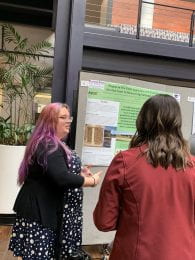
PhD student Lindsay Hutcherson Morris works with K-State Physics professor and former department head Brett DePaola and adjunct faculty member Brian Washburn of the National Institute for Standards and Technology on a unique interdisciplinary project on the boundary of physics and agronomy. She joined the department in 2018 after her participation in our 2017 Research Experience for Undergraduates program.
Lindsay was encouraged to apply to the REU program by her department head at University of South Alabama, Justin Sanders, who received his PhD in 1992 at K-State under the direction of Pat Richard.
Lindsay currently works on an NSF-funded effort with researchers in Physics and Agronomy. Her presentation of this research recently won an award in the Graduate School’s Research and the State Forum as one of 10 posters selected to represent K-State research at the state capitol in Topeka this spring.
Lindsay studies new techniques for remote gas sensing in greenhouse emissions in agriculture, as enteric fermentation from cattle (also known as “cow burps and farts”) is one of the largest sources of anthropogenic methane emissions in the US. She and her team focus on measuring cattle methane emissions by deploying a mobile open-path near-infrared dual-comb spectroscopy (DCS) system. This system functions in the field without the need for external calibration, a considerable advance in technology. Early measurements resulted in time-resolved concentration enhancements of methane, ammonia, carbon dioxide, and water, which were used in conjunction with weather data to calculate fluxes for these gases that compared well with direct measurements using older technologies.
In addition to working on her research, Lindsay participates in the department’s Physics Graduate Student Council as an active member of the Graduate Affairs Committee. This committee brings important issues to the attention of faculty and department administration and works with the department to improve the quality of graduate student life.
Alumni Spotlight – Aleena Rafique
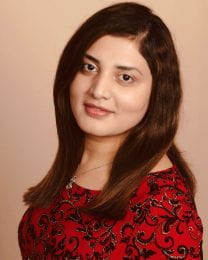
After receiving her PhD in 2018, Aleena Rafique went on to a postdoc position at Argonne National Lab where she worked on the liquid-argon prototype detector of the Deep Underground Neutrino Experiment (DUNE) – ProtoDUNE – the single-phase DUNE Far Detector prototype at CERN’s Neutrino Platform. Aleena led a detailed analysis of electrons that are produced as a result of neutrino interactions and electrons coming from the decay of cosmic muons, Michel electrons. Michel electrons can be used to calibrate the detector’s response to electrons in the tens of MeV energy range, which will be critical for the supernova event search in the DUNE detector. Analyses of neutrino oscillation, supernova neutrinos, and nucleon decay all benefit from capability to detect and reconstruct electrons.
Rafique currently serves as an Assistant Physicist in the High Energy Physics Division at Argonne National Laboratory where she is researching the properties and interactions of neutrinos of several experiments covering US short and long baseline neutrino programs. She is focusing on a DUNE project that will combine the world’s most intense neutrino beam, a deep underground site, and massive liquid argon detectors to enable a broad science program addressing some of the most fundamental questions in particle physics.
Aleena credits her graduate experience at K-State with building the foundation of her career in the neutrino physics community. According to her, “The PhD courses taught by great professors in the Department helped enhance my critical thinking skills, which are necessary for developing a thought process of how to tackle a physics research problem.”
Aleena was mentored by Professor Tim Bolton who she credits with helping build her research skills, initiating a curiosity within her to expand her knowledge of neutrinos, and shaping her career. According to her, her experience at K-State has made a huge impact on her life thus far for which she will always be grateful.
A K-State Physics Public-Private Partnership for Graphene Production
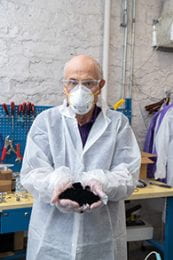
Graphene is a state of carbon that was first isolated and characterized in 2004 by Andre Geim and Konstantin Novoselov of the University of Manchester in the United Kingdom (work for which they won the 2010 Nobel Prize in Physics). It exists in single atom-thick sheets of hexagonally coordinated carbon atoms that give it extraordinary mechanical and electrical properties. Within a decade of its discovery, Chris Sorensen and his group, including then graduate student and now research assistant professor Arjun Nepal, developed a method of producing very high-quality graphene through detonation of a mixture of acetylene and oxygen in a carefully controlled combustion chamber located in the K-State Physics High Bay laboratory in General Richard B. Meyers Hall.
Fewer than 10 years later, Sorensen’s patented graphene production method has been licensed by the startup company Hydrograph Clean Power Inc. (Hydrograph) to make graphene in their Manhattan, Kansas, production facility which is being sold to high technology companies around the world. This rapid development pace was made possible by the investment of Hydrograph from almost the very beginning. This private sector support enabled a faster and nimbler implementation path than typically occurs through federally-funded research. The relationship between K-State Physics and the company has now evolved to one that allows both continued research and development for graphene applications at K-State and access by Hydrograph to specialized equipment and experts at K-State that aid their commercialization efforts.
This partnership represents a new way of conducting research in the department. A great deal of effort has gone into developing rules that allow Hydrograph employees on campus and establishing compensation rates that make the work possible.
Chris Sorensen continues to lead the scientific team as Vice President for Research at Hydrograph, while Arjun Nepal keeps all parties compliant with safety, operations, and financial procedures through his new role as Project Manager. The venture has received strong support from K-State’s Pre-Award Services and K-State Innovation Partners. K-State made a critical investment in the High Bay Lab through its lab safety upgrade program. The final contribution that allowed the parties to realize this new relationship has been the ability of K-State Physics to make timely strategic investments using funds generously donated to the department by Michelle Munson (BS ’96) in setting up the appropriately named Christopher M. Sorensen Physics Incubator Fund.
More details on K-State graphene work and Hydrograph can be found here.
Dr. Sayre Goes to Washington
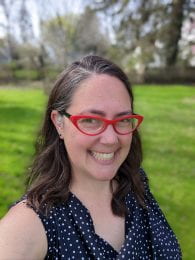
Professor Eleanor Sayre, physics education research, was appointed to the National Science Foundation in January of 2022 as a Program Director for the Division of Undergraduate Education in the Directorate for STEM Education at the National Science Foundation. While at the NSF, she is on leave from Kansas State University.
In her role as a program director, Sayre is guiding and evaluating research at the national level. She works on several programs within STEM education and collaboratively across multiple directorates. Her portfolio includes building national capacity for high-quality STEM education research (BCSER); helping mid-career faculty restart or reorient their research programs (MCA); scholarship programs to support low-income, academically talented undergraduate students (S-STEM); and improving undergraduate STEM education and community transformation (IUSE).
She also works on a new program, the Future of Semiconductors (FuSe), which ensures cutting-edge research and workforce development for semiconductor technologies through multidisciplinary teams. Advances in the range and capabilities of these technologies and reducing their cost of applications across computing, sensing, and communications represent a tremendous opportunity for the country.
Eleanor makes proposal funding recommendations; influences new directions in the fields of science, engineering, and education; supports interdisciplinary research; and aids prospective and current principal investigators in doing high-quality research and development. “It’s incredibly rewarding. I feel like I’m doing good in the world, and I am learning so much about funding processes and promoting cutting-edge research,” Eleanor says.
Working with NSF colleagues, researchers, and others in government is a rare and wonderful opportunity for faculty. While at the NSF, Eleanor retains her ties to K-State. At the end of her NSF appointment, she will be able to return with new insights for her colleagues.
Major Changes Coming to James R. Macdonald Laboratory
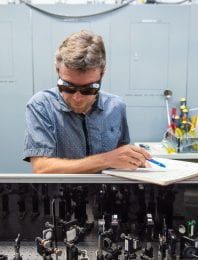
The James R. Macdonald Laboratory (JRML) received its most recent grant renewal, the largest ever, in February 2022 from the US Department of Energy, a move that allowed our department faculty to continue making groundbreaking discoveries in atomic, molecular, and optical (AMO) physics here in Cardwell Hall. The lab also received funding for ongoing research in X-ray free-electron laser facilities in the US and Europe.
The latest grant renewal marks a change in leadership, with Artem Rudenko taking on the role of Lab Director from Brett Esry, who had a successful three-year stint as Director. JRML and the Physics Department greatly appreciate Brett’s successful tenure. Artem will be supported by colleagues Daniel Rolles, Associate Director for Research, and Kevin Carnes, Associate Director for Laboratory Operations along with the lab’s excellent research and technical staff.
This year marks big changes in the lab’s laser facilities as personnel anticipate delivery of a brand new $1.6 million laser system this summer. The system has been secured with funding from a National Science Foundation Major Research Instrumentation award and will greatly expand laser capabilities in the lab. The addition of this new laser requires shuffling of the lab’s existing lasers with its oldest, home-built KLS laser system being put into retirement. The HITS laser will be moved into current KLS space where it will be utilized as a teaching facility. JRML’s current workhorse laser, PULSAR, will be moved to the HITS room, and the new laser will be located in PULSAR’s space. FLAME, the lab’s youngest laser will remain in its current location.
Stringent temperature and humidity requirements are necessary for the new laser. Thus, the College of Arts and Sciences and University leadership assisted JRML and department personnel in securing funding for the upgrade of JRML HVAC systems. These efforts resulted in funding of $500K from the State of Kansas Deferred Maintenance Project and allows for replacement of the lab’s air conditioning with a new system that takes advantage of the University’s chilled water system resulting in an energy-efficient climate-controlled system that will not succumb to rapid weather changes experienced in Kansas. The funding affords the opportunity to replace JRML’s in-house chilled water system. Installation of these systems are scheduled to begin soon with project completion anticipated in time for arrival of the new laser.
“These major upgrades will allow JRML to continue to be a driving force in atomic, molecular, and optical physics research,” said department head Tim Bolton. “Many on campus are unaware of the world-class research going on right here in the Cardwell Hall sub-basement. We intend to better inform all K-Staters and our external stakeholders on this exciting work performed by our JRML team both here at K-State and with their research partners at facilities such as SLAC National Accelerator Laboratory in California and Germany’s Deutsches Elektronen-Synchrotron (DESY). The fundamental AMO research performed at JRML could well lead to next generation photocells for solar power and other technologies that drive our economy forward in the future.” He invites the public to learn more about the lab at the University’s Open House on April 1, 2023, or to contact the department office to set up individual or group visits.
Distinguished Professor Thumm Receives Higuchi-KU Research Award
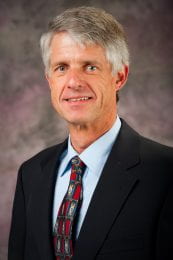
Distinguished physics researcher Uwe Thumm is a recipients of one of the prestigious Higuchi-KU Endowment Research Achievement Awards.
The awards are the state higher education system’s most prestigious recognition for scholarly excellence.
Thumm, university distinguished professor of physics in the College of Arts and Sciences, is the recipient of the Olin Petefish Award in Basic Sciences. Thumm’s work includes understanding the interaction between light and matter in time and space.
“The research being conducted by Dr. Thumm has been truly transformational in his field,” said David Rosowsky, vice president for research. “He is well deserving of this prestigious recognition, and we are so proud to have him at K-State.”
Thumm will be recognized in April.
This is the 41st annual presentation of the Higuchi awards, established in 1981 by Takeru Higuchi, a distinguished professor at the University of Kansas from 1967 to 1983, his wife Aya, and the KU Endowment Association. The awards recognize exceptional long-term research accomplishments by faculty at Kansas Board of Regents universities. Honorees receive $10,000 each for their ongoing research.
Physicist Named Fellow of American Astronomical Society
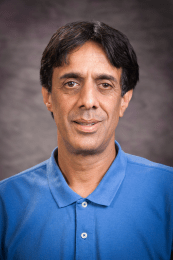 Bharat Ratra, university distinguished professor of physics has been named a 2023 fellow of the American Astronomical Society.
Bharat Ratra, university distinguished professor of physics has been named a 2023 fellow of the American Astronomical Society.
Ratra is one of 22 American Astronomical Society Fellows being honored this year for original research and publications, innovative contributions to astronomical techniques or instrumentation, significant contributions to education and public outreach, and noteworthy service to astronomy and the society.
Established in 1899, the American Astronomical Society is a major international organization of approximately 8,000 professional astronomers, astronomy educators and amateur astronomers. Its mission is to enhance and share humanity’s scientific understanding of the universe as a diverse and inclusive astronomical community.
The society is recognizing Ratra for his pioneering research in cosmology and particle astrophysics leading to the development of dynamical dark energy models and for sustained commitments to science education, undergraduate research and science popularization at all levels.
Ratra studies the structure and evolution of the universe. He currently focuses on developing models for the large-scale matter and radiation distributions in the universe and testing these models by comparing predictions to observational data.
According to Ratra, he and Jim Peebles, Emeritus Albert Einstein Professor of Science and emeritus professor of physics at Princeton University, proposed the first dynamical dark energy model in 1988. Peebles received a Nobel Prize in Physics in 2019.
“Dark energy is the leading candidate for the mechanism responsible for causing cosmological expansion to accelerate,” said Ratra. “The discovery that cosmological expansion is accelerating is one of the most significant scientific discoveries of the last quarter of a century.”
Ratra has published more than 140 scholarly papers and has been cited more than 18,000 times. He has mentored 13 graduate students, five postdoctoral fellows and three visiting faculty members. In the past five years, he has given more than 100 invited presentations around the world.
“Dr. Ratra has had an amazingly versatile career as one of the inventors of dark energy and as a dogged analyst who has tested his models of cosmologies against many different data sets,” said Tim Bolton, physics department head at Kansas State University. “He has mentored numerous students from around the world and is one of K-State’s best science communicators, explaining big, complicated ideas in a clear and understandable way.”
Ratra has received more than $10 million in individual and collaborative grants, largely from the U.S. Department of Energy and the National Science Foundation. He has received many national and university honors and is a fellow of the American Physical Society and the American Association for the Advancement of Science.
He is also active with many science outreach endeavors, including the National Science Foundation’s QuarkNet program for high school science teachers and collaborations with several local schools.
Ratra joined K-State’s physics department as an assistant professor in 1996. Before that, he was a postdoctoral fellow at Princeton University and both the California and Massachusetts Institutes of Technology. He has a doctorate in physics from Stanford University and a master’s degree from the Indian Institute of Technology in New Delhi.
Article by Marcia Locke
Faster than the Speed of Light: An Update on Department Faculty and Staff
We have not published a newsletter since 2019, so below we present a whirlwind update of department faculty and staff.
New Associate Teaching Professor Barbara Fennell jumped right into the department co-teaching Engineering Physics this past fall, and she’ll take the reins from Bret Flanders in Descriptive Physics this spring. Read more about Barbara elsewhere in this newsletter. Brandi Lohman is in the middle of her eighth year as Director of Undergraduate Laboratories and works her scheduling magic every semester in addition to teaching. She is planning for a studio version of General Physics. In her spare time, she is working on a PhD with Eleanor Sayre in physics education. Nino Matcharadze has assumed the role of lead instructor for our venerable P-World class, taking on the challenge every semester of conveying the basics of physics with as little math as possible to non-STEM majors.
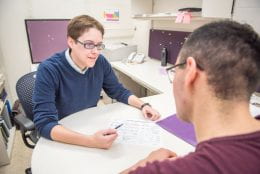
Janae Mooty became academic advisor in fall 2021, replacing Jessy Changstrom (PhD ’22) who has taken a teaching faculty position at KU. An experienced K-12 teacher and doctoral candidate in the College of Education, Janae does much more than advising (which she also handles for the Departments of Biochemistry & Molecular Physics and Statistics). She plans to teach a Global Campus version of Concepts of Physics this summer. Mick O’Shea is winding down more than a decade of service as our Graduate Program Director and Associate Department Head. In 2020 he spent time a Jefferson Science Fellow in the U.S. State Department in the Bureau of Arms Control, Verification, and Compliance. He is in the first year of a three-year phased retirement and is developing a new Global Campus course in the Physics of Outdoor Sport, which will be offered in the fall. After splitting time between Math and Physics, John Pratt is now a full time Department instructor mentoring new generations of students. Our EP and GP students appreciate his keen sense of humor and the extra flourish of a mother country connection as he explains Newton’s laws in his delightful British accent. Kell Ruhnow (MS ’21) helps students through the trials of EP2 as our first Gen Z instructor. She obtained her MS in Physics under the mentorship of Glenn Horton-Smith of our High Energy Physics group. Larry Weaver may not be formally teaching anymore, but you can find him at colloquia and seminars in the department, always asking good questions. He is a frequent mentor who is always willing to explain complex topics to faculty, graduate and undergraduate students in our program as well as the REU program, which he led for many years. Gary Wysin has assumed the duties of Graduate Program Director this spring, in addition to teaching courses at all levels in the department. He is leading a departmental effort to raise stipends for graduate research assistants to help improve quality of life for our students and keep us competitive with other universities.
In the AMO group Itzik Ben Itzhak continues his research into the interaction of intense ultrashort laser pulses with molecular ions in the James R. Macdonald Laboratory (JRML) although he’s splitting time between Kansas and Alabama, where his wife Svetla is on the faculty at Air War College-Air University. Cosmin Blaga has emerged as an outstanding undergraduate research mentor while keeping advanced lasers in the lab humming. His group’s goal is to understand the interaction of matter with intense, ultrafast laser pulses and develop applications and novel technologies based on the newfound science. Kevin Carnes started the first year of his three-year phased retirement this fall, winding down an incredible run as Associate Director for Research in the lab and decades of service working with its directors to maintain the facility. If you know of someone who would like attempt to fill his shoes, please encourage them to apply.
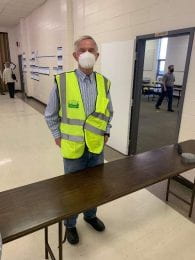
Although retired, Emeritus Distinguished Professor Lew Cocke continues to push K-State AMO forward by popping up in AMO seminars and asking the tough questions. It will surprise no one that when Riley County began its first round of COVID vaccinations, Lew was on-site day one as a volunteer. Brett DePaola began his three-year phased retirement after finishing a term as department head that mirrored the challenges that Amit Chakrabarti faced in the Dean’s office. Brett’s reimagining of Physics 102 as “Physics for Public Policy Makers” has become a huge hit with students and administrators across campus. Brett Esry completed a very successful term as lab director last spring, proving that theorists can handle the hardware. The lab achieved record levels of funding and acquired game-changing new instrumentation under his leadership. Charles Fehrenbach maintains operations of the PULSAR ultrafast laser facility. He also conducts orientation and safety training for the multitude of students and staff working in the JRML each year. Loren Greenman became the Department’s latest recipient of a five-year DOE Early Career award in 2021 for his work on “Theory of the Femtosecond and Attosecond Dynamics of Molecules in Complex Regions of their Potential Landscapes.” Loren is co-director of our NSF REU program with Bret Flanders. Vinod Kumarappan continues his research in UV pulses and high-resolution FFT spectroscopy and recently finished a long run of teaching EP2. Vinod has worked diligently for several years with the undergraduate scholarship committee to ensure these funds are properly disbursed to incoming and current undergraduate students. Chii-Dong Lin has been a driving force in at least two successful rounds of the lab reinventing and reinvigorating itself as a world class facility in AMO physics. He’s currently investigating the interaction of atoms and molecules with intense femtosecond infrared laser and XUV attosecond pulses. Chii-Dong is in year one of a three-year phased retirement, but remains active as ever with his research group. Daniel Rolles leads projects that are bringing next generation lasers to the JRML in addition to bringing collaborators from all over the world to use the powerful Linear Coherent Light Source at SLAC National Accelerator Laboratory, where he is on sabbatical this year. In addition, he is a key member leading graduate student recruitment efforts in the department. Artem Rudenko has taken on the leadership of JRML as its Director and Principal Investigator. He is guiding several instrumentation and infrastructure upgrades, expanding the lab’s capabilities as both a world-class on-campus facility for AMO physics and a major player in international science collaborations at US and European laboratories like SLAC and DESY. K-State President Richard Linton named Artem Cortelyou-Rust Professor this year – the third physics faculty member to hold this position following Chris Sorensen and Pat Richard. Uwe Thumm returned this past fall from a successful sabbatical at several prestigious European universities. He’s focusing on his research investigating strong-field ionization of plasmonic nanoparticles with intense infrared laser pulses. Uwe, Chii-Dong Lin, Loren Greenman, and Brett Esry form the unique team of theoretical physicists at JRML who contribute much to the lab’s success.
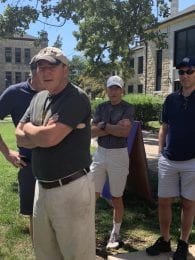
In the Condensed, Soft, and Biological Physics group Matt Berg takes graduate students through his legendary sequence of advanced electrodynamics courses and runs a vibrant program in light scattering physics, with exciting new recent results in in situ particulate emission characterization using a holography system deployed in drones. Amit Chakrabarti led K-State’s College of Arts and Sciences as Dean through an incredibly challenging budgetary and COVID period, managing to set fundraising records for the College. We were delighted to welcome him back to the Department this past fall as professor, researcher, advisor, mentor, and friend. He’s also reviving our undergraduate major program as its director. Bret Flanders and Paul Smith of Chemistry were awarded K-State’s first multi-million dollar Keck Foundation grant, which supports “high-risk and high-impact work of leading researchers to lay the groundwork for new paradigms, technologies, and discoveries that will save lives, provide innovative solutions, and add to our understanding of the world.” He’s heading to Lawrence Livermore National Lab for sabbatical in 2023-24. Arjun Nepal serves as Project Manager for the new partnership between K-State Physics and Hydrograph Clean Power Inc, a startup company seeking to commercialize the graphene production process invented by University Distinguished Professor Emeritus Chris Sorensen and Arjun. Read more about Hydrograph elsewhere in this newsletter. Jeremy Schmit performs innovative research at the boundary of Physics and Biology studying phase behavior and physical properties of protein solutions making him a natural fit as the mainstay of our General Physics program. Jeremy recently led a successful overhaul of our department’s graduate qualifying exam. Chris Sorensen has reinvented the concept of retirement. He continues to voluntarily teach Descriptive Astronomy, maintains a vibrant research program on light scattering with Matt Berg, and serves as the Vice President for Research at Hydrograph Clean Power Inc. See the article elsewhere in this newsletter for more details on Hydrograph.

In High Energy Physics, Tim Bolton spent the last three years on loan from K-State to the Department of Energy in senior project management positions on DOE’s Deep Underground Neutrino Experiment before assuming his department head role. See Tim’s greetings from the Department Head in this newsletter. Glenn Horton-Smith was appointed co-holder of the Lilian E. and Earnest K. Chapin Physics Chair (with Brett Esry) in spring 2021; Glenn is finishing up a very successful 10-year run as PI of the High Energy Physics group. Andrew Ivanov leads a multi-institutional collaboration charged with designing and building electronics for the upgraded pixel tracking system of the CMS experiment at the CERN Large Hadron Collider. Andrew was promoted to full professor in 2021; he’ll be off on sabbatical in 2023-24. Keti Kaadze has become one of the foremost world experts on Higgs boson physics with the CMS detector at the CERN Large Hadron Collider; in addition, she leads a second K-State electronics project for the upgrade of this detector. Keti finished a three-year term on Fermilab’s User’s Executive Committee in 2021, during which she briefed DOE’s High Energy Physics Advisory Committee on the impacts of COVID. Yurii Maravin has assumed the position of Principal Investigator of our High Energy Physics group. He is on sabbatical at CERN this year, and he leads K-State’s yet another instrumentation upgrade project for the CMS experiment at the Large Hadron Collider.
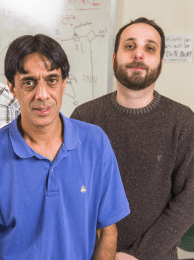
In Cosmology Bharat Ratra tirelessly promotes physics to audiences of K-12 students and members of the public across Kansas and the region, all while continuing his fundamental research in cosmology. Bharat serves as Principal Investigator for the Department’s long running QuarkNet Center, which focuses on providing K-12 teachers from small Kansas high schools with opportunities to engage in research in high energy physics and cosmology. Lado Samushia returned from his sabbatical last year where he spent much of his time working on the Large-Scale Structure Catalog as part of the Data System team on Dark Energy Spectroscopic Instrument, an international science collaboration managed and funded by the Department of Energy. He’s taking over leadership of the Computing Committee from longtime chair Kevin Carnes.
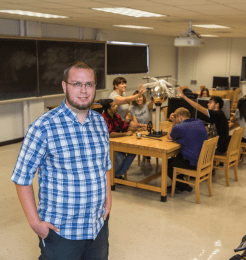
The PER group’s J.T. Laverty is conducting research that focuses on developing assessments, curricular materials, and examples of how to do beneficial things for education researchers as well as traditional physics educators. He also leads our innovative learning assistant program, which partners students who have recently completed EP or GP sequences in class with primary instructors. Teaching assistants help primary instructors teach; learning assistants help students learn. Eleanor Sayre maintains an active research program while on leave at the National Science Foundation. She is the latest of several Physics faculty who have performed national service, including Tim Bolton as a program manager at the DOE Office of Science and Brett DePaola and Mick O’Shea who served as Jefferson Science Fellows with the US State Department. See more on Ellie’s work with the NSF in this newsletter. Group founder Dean Zollman continues to offer wisdom to J.T. Laverty, Ellie Sayre, and the rest of the PER group. In addition, he’s been invaluable to me (along with Brett DePaola and Amit Chakrabarti) as a former Department head and is an asset to all of us in Physics.
The Department picture is not complete without mention of our superb administrative and technical staff. While a separate article lists new additions to our department, we’d like to fill you in on other longtime staff.
Much of our Department’s business runs through the “Kims.” Kim Coy helps administer our graduate and REU programs and supports the PER program, but is better known to our graduate students as their “grad mom.” She was honored by K-State President Richard Linton for 35 years of service and received a University Support Staff (USS) meritorious service award last spring. Kim Elliott keeps the books “by the book” for Physics/Math “Shared Services North,” managing our incredibly complicated mix of revenue and costs while calming the nerves of faculty and university financial officers. Kim E. has been ably assisted for the past five years by Cindy Carlyon, who will be recognized at this year’s spring USS ceremony. Pamela Anderson continues to manage grants, national, and international lab subcontracts, and travel for High Energy Physics as she has done now for nearly two decades.
Chris Aikens, Scott Chainey, Calvin Hodges, and Justin Millette keep JRML equipment running smoothly so that research experiments can be performed using their expertise in design, construction, electronics, and more as they work with the laser and vacuum systems in the lab.
PCSC’s Larry McFeeters, Vince Needham, and Liam McFeeters run what insiders know as the top IT operation on campus – providing both hardware and software support to the Department. They kept our operations up and running during COVID to ensure classes, research, and business operations ran as smoothly from home as they do in Cardwell Hall.
Andy Thurlow manages the Physics Machine Shop and helps the Department and others on campus obtain their research goals by providing the best in machining and mechanical design on campus.
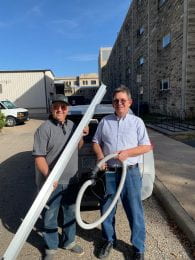
Austin Roberts keeps tabs on the thousands of pieces of equipment in our building, making sure everything ends up in the right place at the right time.
Finally, no individual has impacted more student lives over more than two decades than Peter Nelson, who provides all Department instructional resources for lecture demonstrations and undergraduate labs. Peter also received a USS meritorious award service this past spring.
We are fortunate to have such a talented and dedicated staff to support the academic and research interests of our Department.
Degree Recipients
Congratulations to our Department’s degree recipients that have occurred since 2019. We look forward to seeing what they accomplish next.
Bachelor of Arts & Bachelor of Science
Faisal Al Madani — Bachelor of Science, 2021
Mutlaq Alqahtani — Bachelor of Science, 2020
Peyton Starr Barton — Bachelor of Science, 2019
Axel Campos — Bachelor of Science, 2019
Ryan Carier — Bachelor of Science, 2022
Jeremiah Clark — Bachelor of Science, 2019
Alexander Coon — Bachelor of Science, 2019
David Coria — Bachelor of Science, 2020
James Corona — Bachelor of Science, 2020
Zoe Cosgrove — Bachelor of Science, 2020
Kaleb Cox — Bachelor of Science, 2020
Nicholas Donohoue — Bachelor of Science, 2019
Austin Dortch — Bachelor of Science, 2020
David Engel — Bachelor of Science, 2020
Reid Erdwien — Bachelor of Science, 2019
Blaine Fry — Bachelor of Science, 2021
Patrick Gambill — Bachelor of Science, 2020
Jacob Goldenstein — Bachelor of Science, 2020
Michael Henderson — Bachelor of Science, 2020
Cade Ifland — Bachelor of Science, 2022
Sarah Inskeep — Bachelor of Science, 2020
Spencer Kuchta — Bachelor of Science, 2021
Jesse Laning — Bachelor of Science, 2020
Thomas Lasnier — Bachelor of Science, 2019
Matthew Lewis Jr. — Bachelor of Arts, 2019
Philip Lucas II — Bachelor of Science, 2021
Nathan Marshall — Bachelor of Science, 2021
William Martin — Bachelor of Science, 2020
Kennith McLoud — Bachelor of Science, 2019
Nicholas Mignano — Bachelor of Science, 2021
Sebastian Neal — Bachelor of Science, 2022
Sarah Peterson — Bachelor of Science, 2019
Jacob Peyton — Bachelor of Science, 2019
Jessica Pietrowski — Bachelor of Science, 2020
Joseph Piriano — Bachelor of Science, 2022
Zane Phelps — Bachelor of Science, 2020
Joshua Richards — Bachelor of Science, 2021
Kenton Schroeder — Bachelor of Science, 2022
Jared Schuler — Bachelor of Science, 2020
Parker Stoops — Bachelor of Science, 2019
Paul Teriault — Bachelor of Science, 2019
Joshua Weaver — Bachelor of Science, 2022
Cheyne Weis — Bachelor of Science, 2019
Joshua Williams — Bachelor of Science, 2020
Samuel Wilson — Bachelor of Science, 2021
Masters & Doctoral Degrees
 Alharbi, Hessah — MS 2021, Advisor: Chris Sorensen
Alharbi, Hessah — MS 2021, Advisor: Chris Sorensen
AlRashed, Munerah — PhD 2019, Advisor: Tim Bolton
Anderson, Peter A — MS 2021, Advisor: Matt Berg
Bender, Lydia — MS 2020, Advisor: J.T. Laverty
Bhandari, Kamal — PhD 2021, Advisor: Jeremy Schmit
Budhathoki, Santosh — MS 2019, Advisor: J.T. Laverty
Changstrom, Jessica — PhD 2022, Advisor: Eleanor Sayre
Coghlan, Virginia — MS 2019, Advisor: J.T. Laverty
Ebini, Raiya — PhD 2020, Advisor: Chris Sorensen
Feizollah, Peyman — PhD 2022 PhD, Advisor: Matt Berg
Gautam, Prakash — PhD 2022, Advisor: Chris Sorensen
Giri, Ramesh — PhD 2022, Advisor: Matt Berg
Hosseini-Zavareh, Sajed — MS 2019, Advisor: Kristan Corwin
Huynh, Tra Thi Thanh — PhD 2020, Advisor: Eleanor Sayre
Jambuge, Amali — PhD 2021, Advisor: J.T. Laverty
Jochim, Bethany — PhD 2019, Advisor: Itzik Ben-Itzhak
Kaderiya, Balram — PhD 2021, Advisor: Artem Rudenko
Khadka, Narayan — PhD 2022, Advisor: Bharat Ratra
Khong, Hien — PhD 2022, Advisor: Eleanor Sayre
Kim, Doyeong — PhD 2022, Advisor: Keti Kaadze
Lam, Huynh — PhD 2021, Advisor: Vinod Kumarappan
Li, Xiang — PhD 2019, Advisor: Artem Rudenko
Li, Jianxiong — PhD 2019, Advisor: Uwe Thumm
Maughan, Justin — PhD 2020, Advisor: Chris Sorensen
Meddage, Varuna — PhD 2019, Advisor: Glenn Horton-Smith
Mendis, Dalath Rachitha — PhD 2019, Advisor: Andrew Ivanov
Mitchell, Tyler Benjamin — PhD 2020, Advisor: Andrew Ivanov
Panta, Krishna — PhD 2022, Advisor: Bret Flanders
Pathak, Shashank — PhD 2021, Advisor: Daniel Rolles
Paudel, Ajib — PhD 2021, Advisor: Glenn Horton-Smith
Phan, Tam — PhD 2021, Advisor: Jeremy Schmit
Phan, Tien — PhD 2021, Advisor: Jeremy Schmit
Ramallo, Nelson — PhD 2020, Advisor: Jeremy Schmit
Rijal, Shital — MS 2022, Advisor: Bret Flanders
Robatjazi, Seyyed — PhD 2021, Advisor: Artem Rudenko
Ruhnow, Kelley — MS 2021, Advisor: Glenn Horton-Smith
Ryan, Joseph — PhD 2021, Advisor: Bharat Ratra
Saydanzad, Erfan — PhD 2021, Advisor: Uwe Thumm
Severt, Travis — PhD 2021, Advisor: Itzik Ben-Itzhak
Stoops, Parker — MS 2022, Advisor: Chris Sorensen
Summers, Adam — PhD 2019, Advisor: Daniel Rolles
Weerasinghe, Kushan— PhD 2019, Advisor: Brian Washburn
Weinschenk, Sedrick — MS 2022, Advisor: Keti Kaadze & Yurii Maravin
Wright, Justin — PhD 2022, Advisor: Chris Sorensen
Ziaee, Farzaneh — PhD 2022, Advisor: Artem Rudenko
Zohrabi Alaee, Dina — PhD 2020, Advisor: Eleanor Sayre
In Memoriam
It is with deep sadness that we announce the passing of several beloved members of our department
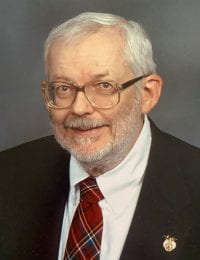
John Spangler passed away March 30, 2020, at his home in Manhattan at the age of 83. He attended Kansas State University as an undergraduate. He received his PhD from Duke University and then entered the US Army. He began his academic career at DePauw University in Indiana but returned to K-State as a physics faculty member from 1965-85. In 1985, John began teaching at St. Norbert College in Green Bay until his retirement in 1998 and returned to Manhattan. He served as an instructor periodically over the years after his return to Manhattan.
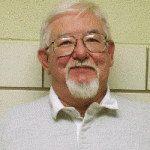
J.R. Macdonald Laboratory professor Tom Gray passed away May 4, 2020, at the age of 82. Tom joined the department in 1977 after serving as a faculty member at North Texas University for 10 years. He retired from K-State in 2003. Tom was a Fellow of the American Physical and published numerous papers during his career. Tom retired to Corpus Christi, TX, in 2006.
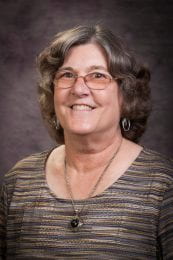
Longtime office specialist Deanna Selby passed away on July 25, 2022, after a courageous battle with cancer at the age of 71. Deanna joined the department in January 1985 after beginning in Grain Science. She maintained the key records for the department and completed travel requests and reimbursement in addition to copying department course syllabi and exams. She retired from the department at the end of 2017.

John Eck passed away December 22, 2022. John spent 16 years in the department before joining the faculty at University of Toledo in 1985 as associate dean of the graduate school. He went on to become associate vice president of research and graduate studies at Old Dominion University from 1989 – 1995. He retired in 2010 as dean of the College of Natural Sciences and Mathematics at Indiana University of Pennsylvania and eventually moved to Norfolk, VA to be close to family.
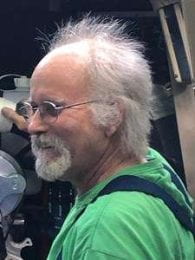
Glen Rubash, machinist, passed away February 16, 2023. Following a 30 year career with the Junction City Fire Department, Glenn became a facilities technician at K-State. After retiring from his position in Facilities in 2019, Glenn joined the physics department as a machinist in the machine shop where he completed various projects until the time of his death.
These individuals all made important contributions to our department over the years and will be missed by their family, friends, and colleagues.
Contact Us: We Want to Know What You’ve Been Up To
We want to hear from you! Please contact us at alumni@phys.ksu.edu or give us a call at 785-532-6786 to let us know how you are doing. If you find yourself in the Little Apple, let us show you around the department so that you can connect with our current students, faculty, and staff who will bring you up to speed on the latest happenings in the department.
Don’t forget to send us your news for inclusion in an upcoming newsletter.
Support K-State Physics: Please Consider Giving Back
The Department of Physics has many alumni and friends with successful careers in academia and industry. You all play an increasingly important role in supporting the department’s initiatives in areas that make significant contributions to our society.
There are many ways you can help to make our programs even better …
- Help us recruit! You know what it takes to succeed in our program, so help us find students who will excel in the classroom and research labs. Recruiting for our undergraduate and graduate programs is a high priority, so if you are in academics or working with student and interns in industry, please let them know about the exciting opportunities here in Physics at K-State.
- Invest time! Time is a generous offering that benefits our students. Interested in mentoring students? Want to host a student for a job shadowing experience? Have an internship or job position available? Contact the department at alumni@phys.ksu.edu or call (785) 532-6786.
- Make a gift! We welcome your support in the form of a gift to either a directed fund or a general gift to the department. If you wish to direct a gift to the department, please contact the K-State Foundation Arts & Sciences Development team who will match you to programs that connect with your interests and passions. They can be reached at (800) 432-1578. You can also make a gift online by visiting the K-State Foundation.